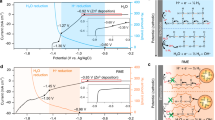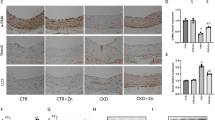Abstract
TAKE a glass vessel, a porous cell, a zinc rod and a carbon plate, such as are used in the ordinary Leclanché cell (a circular glass vessel of the same capacity is better). Prepare a solution of 20.4 grams of potassium dichromate and 87.4 grams of sulphuric acid (sp. gr. 1.75) in 350 grams of water and pour it into the glass vessel. Place the carbon plate in this solution. Fill the porous cell with a solution of 14.5 gm. of ammonium chloride in 200 gm. of water and place it in the glass vessel containing the dichromate solution. The amalgamated zinc rod is placed in the porous cell. The E.M.F. of this cell is 2 volts. The internal resistance is about 0.6 to 0.8 ohm. When continuqusly used, it gives a constant current for more than 12 hours, and the E.M.F. remains unchanged. The rate of dissolution of zinc (when a rod of zinc is used) is only 2.5 gm. in 12 hours, while in the bichromate cell the rate is 12 gm. When used intermittently, the cell remains efficient for more than three weeks.
This is a preview of subscription content, access via your institution
Access options
Subscribe to this journal
Receive 51 print issues and online access
$199.00 per year
only $3.90 per issue
Buy this article
- Purchase on SpringerLink
- Instant access to full article PDF
Prices may be subject to local taxes which are calculated during checkout
Similar content being viewed by others
Author information
Authors and Affiliations
Rights and permissions
About this article
Cite this article
JINDAL, S. A Useful Electric Cell. Nature 119, 639 (1927). https://doi.org/10.1038/119639a0
Issue date:
DOI: https://doi.org/10.1038/119639a0



